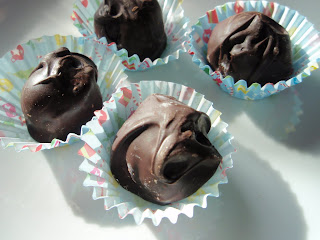
These Minnesota soldiers in training marched on the dusty streets of Camp Dodge outside Des Moines, Iowa in 1917 and 1918. Soon they would be fighting on the fields of France during World War I. November 11 was once called Armistice Day, honoring all those who fought for freedom and marking what people hoped would be the "end of the 'war to end all wars.'"
The truth is, if you had relatives in the United States in 1917, they fought in this war. They may not have been actual soldiers, but they all participated in the war efforts. Women, children, and men collected metal for recycling, folded bandages for the wounded, knitted sweaters and socks to keep soldiers and sailors warm, and changed the way they ate to conserve food for our allies and soldiers.

Here, in another picture from the archives of the Minnesota Historical Society, women attend "war cooking classes" taught by the University of Minnesota Extension Division, learning how to make meatless meals and wheatless breads. Federal food administrator Herbert Hoover lead the campaign, but citizens all over the nation cheerfully took up the cause as this poem credited to Mabel L. Clapp and appearing in Northfield, Minnesota's Norwegian American on January 25, 1918 demonstrates.
Hoover’s Going to Get You!
The “great old Hoover Pledge” has
come to our house to stay;
To frown on breakfast bacon down,
and take our steak away;
It cans our morning waffles, and our
sausage, too, it seems,
And dilates on the succulence of corn,
and spuds and beans,
So skimp the sugar in your cake
and leave the butter out!
Or Hoover’s goin’ to get you if you
Don’t Watch Out!
O, gone now are the good old days of
hot cakes, thickly spread;
And meatless, wheatless, sweetless
days are reigning in their stead;
And gone the days of fat rib roasts,
and two-inch T-bone steaks,
And doughnuts plump and golden
brown, the kind that mother makes
And when it comes to pies and cake,
just learn to cut it out.
Or Hoover’s goin’ to get you if you
Don’t Watch Out!
So spread your buckwheats sparingly,
and peel your taters thin;
And tighten up your belt a notch, and
don’t forget to grin.
And, if, sometimes, your whole soul
yearns for shortcake high and wide,
And biscuits drenched with honey, and
chicken, butter fried,
Remember then that Kaiser Bill is
short on sauerkraut.
And Hoover’s goin’ to get him if we’ll
All Help Out!
This Veteran's Day why not make a different kind of thanks-giving -- a World War I style meal. There are several recipes in the posts below. Meat Cakes, Whole Wheat Chocolate Cookies, Victory Cabbage, War Bread, Oatmeal Muffins to name just a few. Take a moment -- perhaps at 11 a.m. on November 11, to think about the contributions and sacrifices of those who have gone before. Say "thank you" to a soldier or veteran and remember to celebrate all that makes this nation great.













